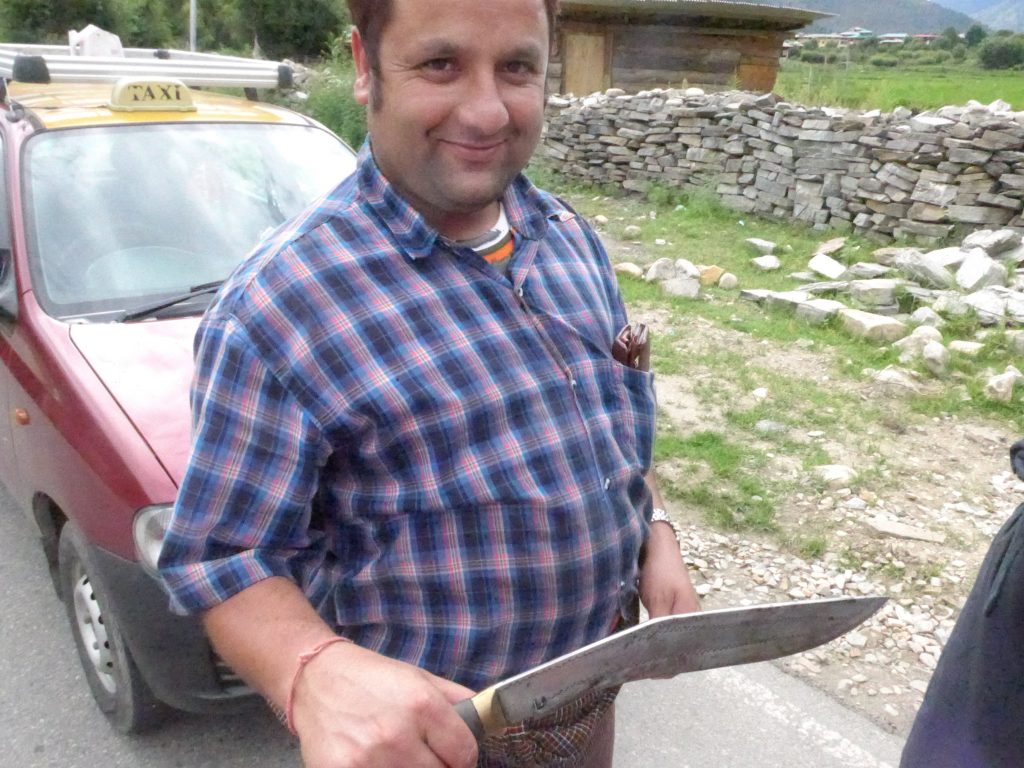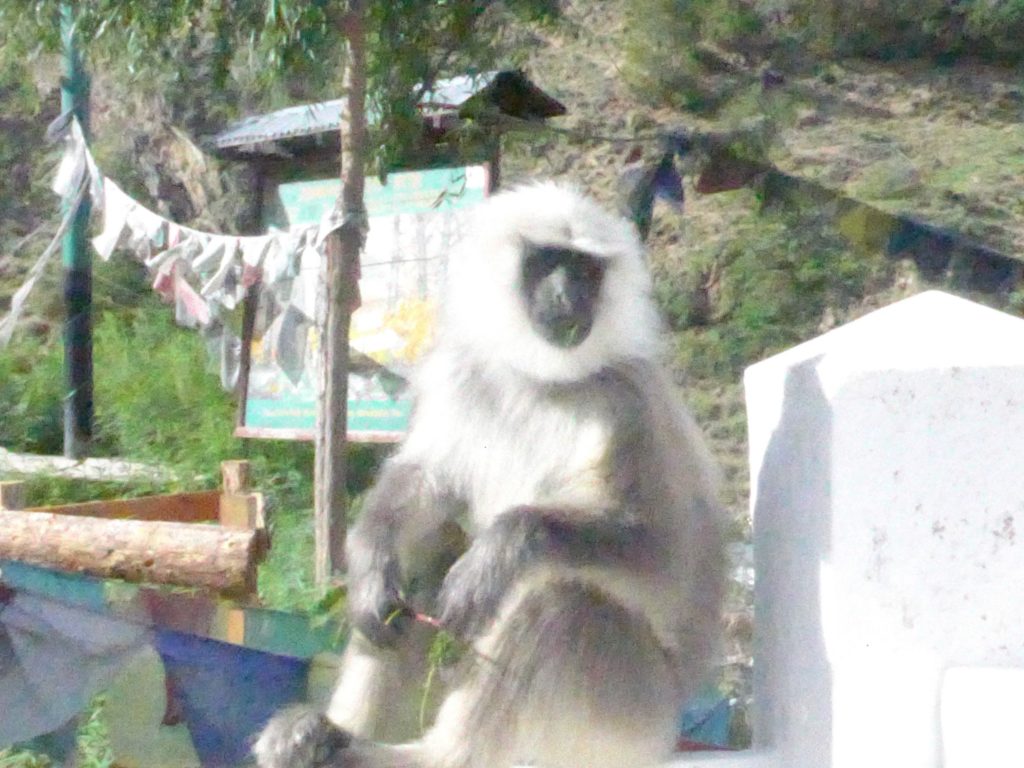We drove out to the airport in the relative comfort of two large taxis, arriving some 30 minutes before the ticket counter opened. The airport staff were a bit bemused by all our bags and packages—and they said that the iPads could not go in checked bags, which blew our hand luggage allowance. In the end, despite all of James’s repacking, this worried them not at all.

Jeremy was still keeping himself occupied with knot-tying, luckily, since there was a long wait for the flight itself. We all sat on the left side, hoping for a glimpse of the Himalayas. Zoë managed to catch a few shots of the mountains peeking through the clouds.


Then we were coming down, hugging the hills, angling down for an approach through the middle of the mountains. It felt as if you could reach out and touch the cattle on the hillsides. (No photos because of a strict ban on electronic devices.)
I was startled by how few buildings we saw coming in, and how ubiquitous the mountains were. A moment of truth: I really have no idea about this country where I have brought my family to live for a year.

Could this be the most stately airport building in the world?

As we were picking up our luggage, we met a man who introduced himself (we thought) as the previous Minister of the Environment—though James and I may have misunderstood. “Everyone knows everyone here,” he told us. “As soon as you get to Kanglung, everyone will know you too.” As we wheeled our trolleys through the customs office, I felt obliged to say that I had a pack of iPads as part of my research grant. “Next time, you should get the College to write a letter about such things. There are duties to be paid,” the official grumbled, while waving me through nonetheless. Our new acquaintance kept up a running monologue in Dzongkha, clearly about our family and the new program at Yonphula, which I think eased our path through.
But then we were out of the airport, meeting Ugyen, the driver sent from Sherubtse to meet us, and he was asking whether we had gotten out money. Oops. I talked my way back into the airport apologetically, and found a cash machine that let me take out 10,000 ngultrum (about $150). Someone had left a Visa cash card sitting on the machine, and I asked two men talking nearby what I should do with it. “Just leave it there,” they said, “so whoever left it can come back and find it.” Bhutanese culture in action, perhaps: it’s hard to imagine another airport where that would be the right thing to do.


The road from Paro to Thimphu runs beside the river—in fact, we are finding many roads following the path cut by rivers through the mountains here. Ugyen stopped the truck briefly and James took the opportunity to dig something out of one of our bags. The bags had all been closed with plastic ties by DrukAir, so James asked a passerby if he had a penknife James could borrow:

OK, whatever works.
Here is our first, rather blurry, Bhutanese monkey:

The entry to Thimphu:

Shelly Daly had said that we didn’t need to book a hotel in advance—the College driver would know of a good place to stay and might even have booked a place for us. This turned out not to be true. Ugyen got on the phone to friends. I asked for a quiet place (since some hotel reviews I had seen had complained about noise in the center of town). Ugyen said he had found a quiet place—it turned out to be a resort about 20-30 minutes outside of Thimphu, up the hillside in Taba. I was intrigued to see a sign for the new law school just below the resort. The first few nights we seemed to be the only ones in the hotel: quiet indeed. But we didn’t arrive until around 6 p.m., and dinner was late and a little unadorned. We were happy to fall into bed at the end of it: Jeremy sleeping in a king-sized bed with James and me, and Zoë on a small single mattress squeezed in at the side.
